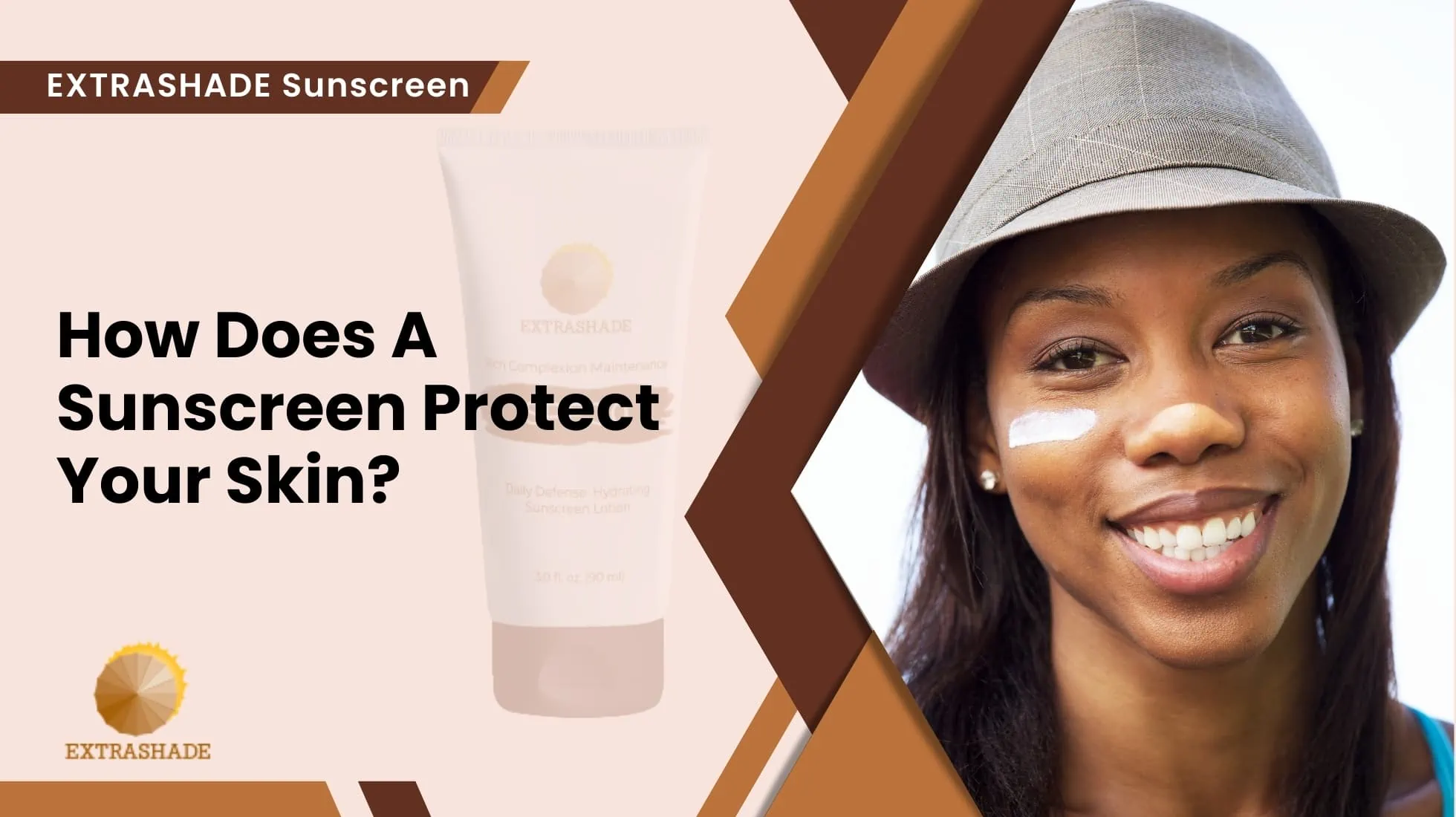The sun, our life-giving star, hides a sinister secret: invisible daggers of radiation poised to pierce your skin, wreaking havoc on your cells like unseen assassins. But don’t worry, for science has forged a shield, a magical potion, a barrier against the very light that sustains us! Prepare to face the scorching truth!
Today, we unveil the incredible story of How Sunscreen Protects Your Skin: A Tale of Science, Sun, and Superhuman SPF!
How Sunscreen Protects Your Skin
Sunscreen protects your skin by absorbing, reflecting, or scattering the sun’s ultraviolet (UV) radiation. UV radiation is divided into three main types: UVA, UVB, and UVC. UVC is mostly absorbed by the Earth’s atmosphere, but UVA and UVB can reach the Earth’s surface and cause damage to the skin.
Here’s how sunscreen works to protect your skin:
1. Chemical filters
- Most sunscreens contain organic (carbon-based) compounds known as chemical filters. These compounds absorb UV radiation and transform it into heat, which is then released from the skin.
- Chemical filters are effective against either UVA or UVB radiation or a combination of both, depending on the specific ingredients used in the sunscreen formulation.
2. Physical (Mineral) Filters
- Some sunscreens use inorganic compounds, such as zinc oxide or titanium dioxide, as physical filters. These minerals act as a barrier on the skin’s surface and reflect or scatter UV radiation away from the skin.
- Physical filters provide broad-spectrum protection against both UVA and UVB radiation.
3. Broad-Spectrum Protection
- Effective sunscreens provide broad-spectrum protection, meaning they guard against both UVA and UVB radiation. UVA rays can prematurely age the skin and contribute to the formation of wrinkles, while UVB rays are primarily responsible for causing sunburn.
4. Sun Protection Factor (SPF)
- Sunscreen effectiveness is measured by its Sun Protection Factor (SPF). SPF indicates the level of protection against UVB radiation. For example, SPF 30 means it would take 30 times longer for the skin to burn compared to unprotected skin under the same conditions.
- It’s important to note that SPF only measures protection against UVB rays, so it’s essential to choose a broad-spectrum sunscreen for comprehensive protection.
5. Application and Reapplication
- For sunscreen to be effective, it must be applied generously and evenly to all exposed skin, even on cloudy days.
- Reapplication is crucial, especially after swimming or sweating, as well as every two hours when spending extended periods in the sun.
Conclusion
Sunscreen is a crucial tool for protecting our skin from the harmful effects of UV radiation. By creating a barrier on the skin’s surface, sunscreen helps to absorb and reflect the damaging rays, preventing sunburn, and premature aging, and reducing the risk of skin cancer.
Understanding the importance of using sunscreen regularly and reapplying it as needed can help us maintain healthy skin and reduce the long-term effects of sun exposure. As we continue to enjoy outdoor activities, it is essential to incorporate sunscreen into our daily routine and encourage others to do the same. Let’s all commit to prioritizing sun protection and safeguarding our skin for a healthier future.

